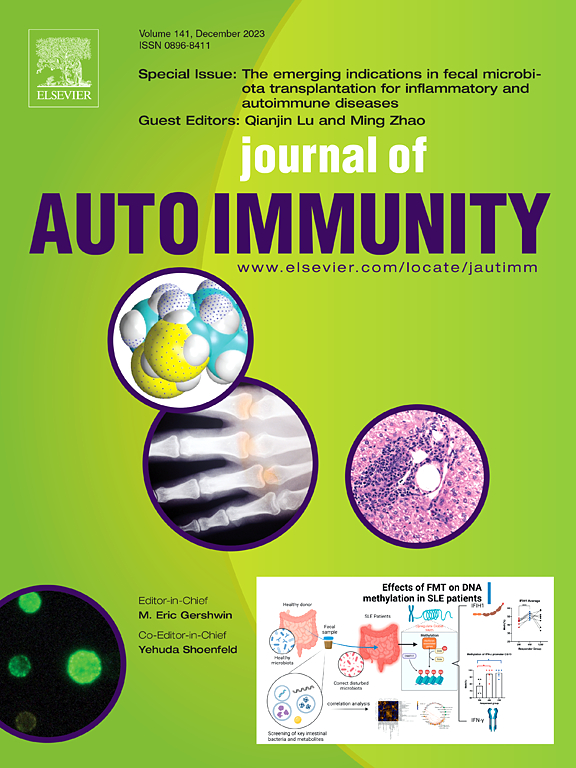调节性T细胞在健康和自身免疫性疾病中的多样性和功能。
IF 7
1区 医学
Q1 IMMUNOLOGY
引用次数: 0
摘要
调节性T细胞(Regulatory T cell, Treg)在免疫调节和维持宿主免疫稳态中起着关键作用。Treg异质性以不同的基因表达谱和功能状态为特征,在健康和疾病中都很复杂。研究表明,treg不是一个统一的种群,而是根据其起源、位置和功能状态表现出多样性。这种异质性对于理解Treg在各种病理条件下的作用至关重要。功能失调的Tregs与自身免疫性疾病的发病机制密切相关,尽管其确切机制尚不清楚。Tregs的表型和功能异质性在系统性红斑狼疮、多发性硬化症、类风湿性关节炎、炎症性肠病、1型糖尿病、牛皮癣和自身免疫性肝病等疾病中尤为显著。本文综述了Treg的起源、分类和异质性,旨在为诊断和治疗提供新的视角和策略。了解Treg的异质性和可塑性有望揭示新的治疗靶点和推进精确免疫治疗的发展。本文章由计算机程序翻译,如有差异,请以英文原文为准。
Diversity and function of regulatory T cells in health and autoimmune diseases
Regulatory T cell (Treg) play a pivotal role in immune regulation and maintaining host immune homeostasis. Treg heterogeneity, characterized by diverse gene expression profiles and functional states, is complex in both health and disease. Research reveals that Tregs are not a uniform population but exhibit diversity based on their origin, location, and functional status. This heterogeneity is crucial for understanding Treg roles in various pathological conditions. Dysfunctional Tregs are closely linked to the pathogenesis of autoimmune diseases, although the precise mechanisms remain unclear. The phenotypic and functional heterogeneity of Tregs is particularly significant in diseases such as systemic lupus erythematosus, multiple sclerosis, rheumatoid arthritis, inflammatory bowel disease, type 1 diabetes, psoriasis and autoimmune liver diseases. This review explores Treg origins, classifications, and heterogeneity in these conditions, aiming to provide new perspectives and strategies for diagnosis and treatment. Understanding Treg heterogeneity and plasticity promises to reveal novel therapeutic targets and advance precision immunotherapy development.
求助全文
通过发布文献求助,成功后即可免费获取论文全文。
去求助
来源期刊

Journal of autoimmunity
医学-免疫学
CiteScore
27.90
自引率
1.60%
发文量
117
审稿时长
17 days
期刊介绍:
The Journal of Autoimmunity serves as the primary publication for research on various facets of autoimmunity. These include topics such as the mechanism of self-recognition, regulation of autoimmune responses, experimental autoimmune diseases, diagnostic tests for autoantibodies, as well as the epidemiology, pathophysiology, and treatment of autoimmune diseases. While the journal covers a wide range of subjects, it emphasizes papers exploring the genetic, molecular biology, and cellular aspects of the field.
The Journal of Translational Autoimmunity, on the other hand, is a subsidiary journal of the Journal of Autoimmunity. It focuses specifically on translating scientific discoveries in autoimmunity into clinical applications and practical solutions. By highlighting research that bridges the gap between basic science and clinical practice, the Journal of Translational Autoimmunity aims to advance the understanding and treatment of autoimmune diseases.
 求助内容:
求助内容: 应助结果提醒方式:
应助结果提醒方式:


